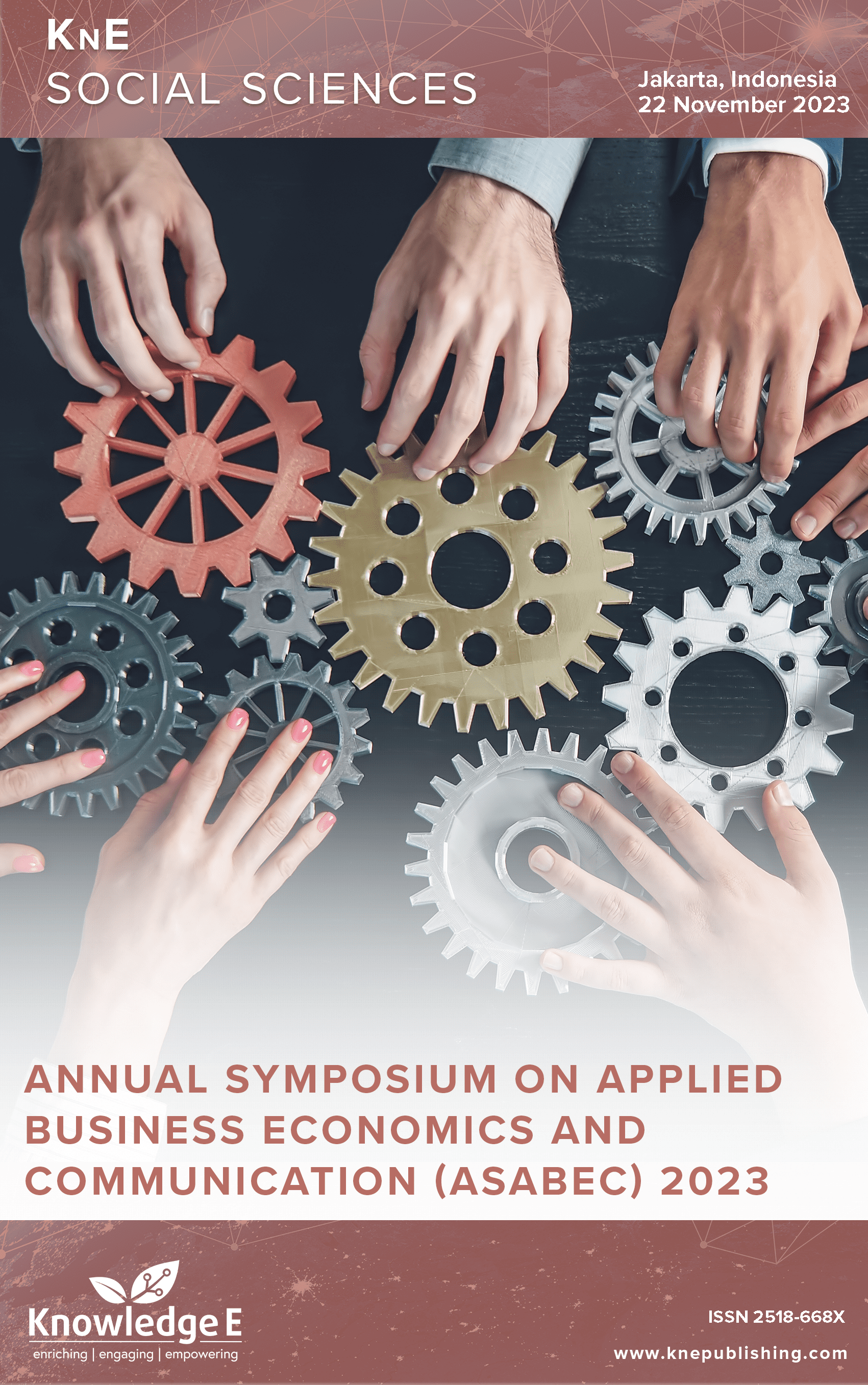Naming Buildings in Universities Based on the Names of National Figures to Ignite the Fighting Spirit of the Academic Community
DOI:
https://doi.org/10.18502/kss.v9i25.16995Abstract
The naming of the building at Universitas “X” as one of the leading universities in Indonesia is not fully known. This study investigates the reasons for naming places using the names of national figures, the language unit structure of place names, and the names of places that have been given special names. This qualitative research data were collected using a documentation study, a search for news on the internet with reliable sources of information, interviews with informants who have information about the building names at Universitas “X”, and direct observations. The data were analyzed qualitatively according to those presented by Miles dan Huberman: data reduction, display, and conclusion drawing. The research results in naming buildings based on the names of national figures intended so that the academic community can emulate national figures’ spirit, achievements, and fighting power. The phrase structure of building names based on the rules for English language toponymy is a combination of common nouns and proper nouns, such as Gedung Prof. Mr. H. Mohammad Yamin, Gedung Prof. Dr. Ace Partadiredja, and Gedung K.H. A. Wahid Hasyim. As a follow-up to this research, it can be investigated, among others, how to name streets or name rooms on campus with this Islamic spirit.
Keywords: toponymy, place name, building name, universitas “X”
References
Kumala SA, Lauder MR. Makna Toponim di Tangerang sebagai Representasi Keberadaan Etnis Cina Benteng: Sebuah Kajian Linguistik Historis Komparatif. Ranah J Kaji Bhs. 2021;10(2):304. DOI: https://doi.org/10.26499/rnh.v10i2.4048
Economides N. Oxford Handbooks Online Neutrality. 2018 Feb;2016:1–16.
Neethling B. Street Names A Changing Urban Landscape. Oxford Handb Names Namin. 2022 Jan;2016:144–57. DOI: https://doi.org/10.1093/oxfordhb/9780199656431.013.50
Puyey G. Linguistik Landscapes. 2016;(December):1–10.
Walford C. River names. Notes Queries. 1883;s6-VIII(196):256. https://doi.org/10.1093/nq/s6-VIII.196.256b. DOI: https://doi.org/10.1093/nq/s6-VIII.196.256b
Koswara D, Hermawan B. A semiotic analysis of toponymy in classic Sundanese literary texts. Indones J Appl Linguist. 2021;10(3):615–27. DOI: https://doi.org/10.17509/ijal.v10i3.31743
Ainiala T. Oxford Handbooks Online. Choice Rev Online. 2013;50(11):50-5912-50– 5912. DOI: https://doi.org/10.5860/CHOICE.50-5912
Lauder M. Pemetaan dan Distribusi Bahasa-Bahasa di Tangerang. Paper Knowledge . Toward a Media History of Documents. Jakarta: Pusat Pembinaan dan Pengembangan Bahasa RI; 1993.
Wulandari LS. Toponimi “Cilacap” Berdasarkan Perspektif Linguistik dan Sejarah. In: Conference: Seminar Nasional ToponimiAt: Fakultas Ilmu Budaya Universitas Indonesia. Jakarta; 2016.
Hill DP, Names M. Oxford Handb Names Namin. 2018 Jul;2018:115–24.
Blair D, Tent J. A Revised Typology of Place-Naming. Names. 2021;69(4):31–47. DOI: https://doi.org/10.5195/names.2021.2260
Nash J. Is toponymy necessary? Stud Lang. 2015;39(1):230–5. DOI: https://doi.org/10.1075/sl.39.1.08nas
Hidayah N. Toponimi Nama Pantai di Yogyakarta. Prosiding Seminar Nasional Linguistik dan Sastra. SEMANTIKS; 2019.
Segara NB. Kajian Nilai Pada Toponimi Di Wilayah Kota Cirebon Sebagai Potensi Sumber Belajar Geografi. J Geogr. 2017;14.
Wijaya DN, Wahyudi DY, Umaroh SZ, Susanti N, Ertrisia RA. The toponymy of the villages in Ambon Island: A historical and archaeological study. Berk Arkeol. 2021;41(1):89–108. DOI: https://doi.org/10.30883/jba.v41i1.600
Shang G, Yang L. Practicing and managing foreign toponyms in China: Cultural Politics and Ideologies. Names. 2023;71(2):1–11. DOI: https://doi.org/10.5195/names.2023.2435
Xie Q, Ursini FA, Samo G. Urbanonyms in Macao. Names. 2023;71(1):29–43. DOI: https://doi.org/10.5195/names.2023.2421
Dalgiç EN, Yildirim Okta B. Changing the identity of a place by changing street names: The process of renaming the streets of Üsküdar between 1927-1934. A/Z ITU J Fac Archit. 2023;20(1):181–97. DOI: https://doi.org/10.58278/0.2023.1
Möller LA. Multilingual place names in Southern Africa. Names. 2019;67(1):5–15. DOI: https://doi.org/10.1080/00277738.2017.1415536
Khoa NV. Revisiting semantic issues of proper names: A Vietnamese Perspective. Names. 2022;70(1):40–9. DOI: https://doi.org/10.5195/names.2022.2378
Belenov NV. Lexical and semantic analysis of the toponymy of the Erzya village Maly Tolkay of Samara Oblast. Bull Ugric Stud. 2022;12(1):17–26. DOI: https://doi.org/10.30624/2220-4156-2022-12-1-17-26
Miles MB, Huberman AM. Qualitative data analysis: An expanded sourcebook. sage; 1994.
Halfian WO, Hariyati H, Masri FA. Toponimi Penamaan Jalan Di Kecamatan Lasalepa Kabupaten Muna. J Pendidik Bhs dan Sastra Indones Met. 2022;7(1):35–50. DOI: https://doi.org/10.21107/metalingua.v7i1.15146
Nugraha IS, Indrayani LM, Soemantri YS. Place-Naming (Toponymy) of Kecamatan in Bandung: A Morphological Study. IDEAS J English Lang Teach Learn Linguist Lit. 2020;8(1):126–36. DOI: https://doi.org/10.24256/ideas.v8i1.1325
Adab N, Datang FA. The origin of beach names in Tanjungsari: toponymy Studies. Int Rev Humanit Stud. 2021;6(1):594–614. DOI: https://doi.org/10.7454/irhs.v6i1.324
Segara NB, Hermansyah. Toponym investigation as introduction to the local value in Cirebon City. IOP Conf Ser Earth Environ Sci. 2021;683(1):0–8. DOI: https://doi.org/10.1088/1755-1315/683/1/012014
Tent J. Approaches to research in toponymy. Names. 2015;63(2):65–74. DOI: https://doi.org/10.1179/0027773814Z.000000000103

